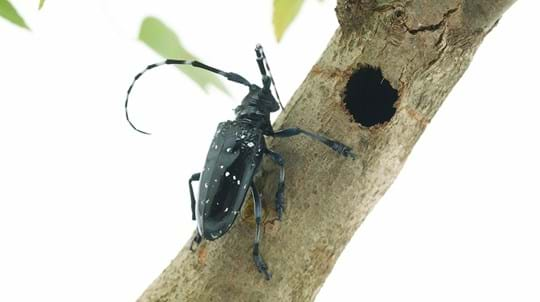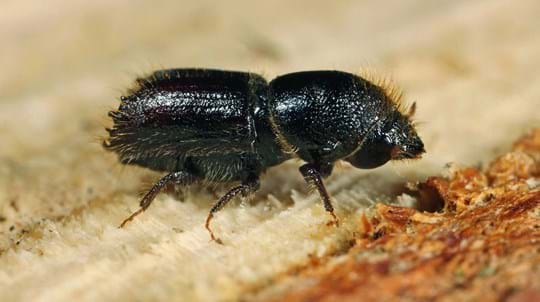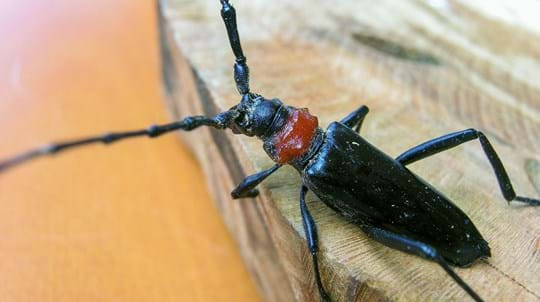
Credit: Martin Jukes / Forest Research
When did the great spruce bark beetle get here and how?
The beetle was first discovered in the UK in 1982 although evidence has now been found that it could have been here as early as 1973, though we don’t know how it arrived. In 1996 an outbreak site was discovered in Kent leading to the realisation that its range had spread from the west of the country.
One way it might have made its way to the UK is through the movement of untreated wood from infested sites in Europe and Asia. The larvae can live concealed inside infested wood and remain undetected until after transportation.











